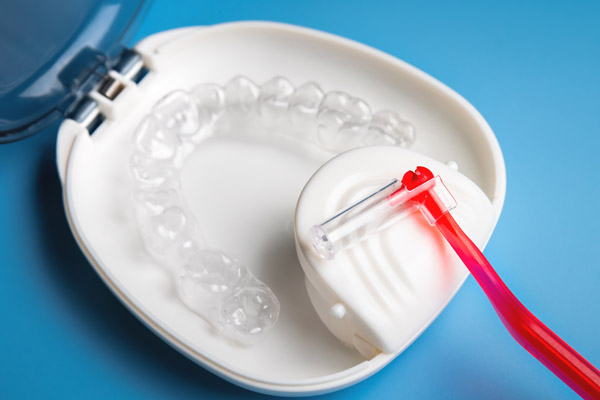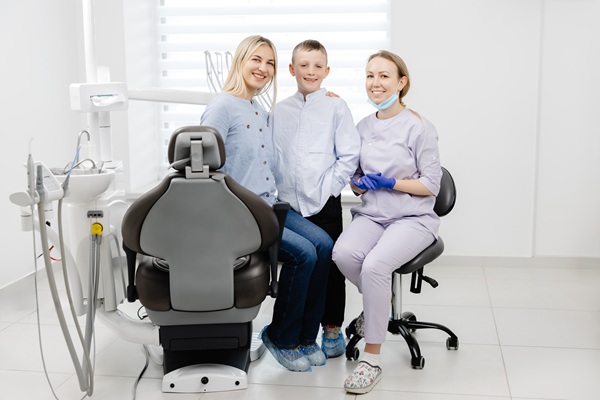Comparing the Invisalign Process With Traditional Braces

As an alternative to traditional braces for straightening teeth, Invisalign® has been available for several decades. During that time, it has become very popular because of the advantages it has over traditional braces. Nevertheless, not everyone is a candidate for clear aligners, and braces have some advantages that make them the better treatment option for some patients. Here is some information to help you determine whether you are a candidate for alternative treatment and how the two options compare to one another.
Who is a candidate for Invisalign®?
Your dentist may be able to tell you whether you are a candidate for clear aligners based on your individual situation. Invisalign® places less pressure on the teeth than braces do. Therefore, it is appropriate for people who have mild to moderate malalignment. It may not be effective for people who have severe problems with alignment or occlusion, in which case you may need traditional braces.
How does Invisalign® compare with traditional braces?
The results you can get from clear aligners are nearly identical to those you can receive from traditional braces. Each treatment option has its own strengths and weaknesses, and it may help to see how certain aspects of each compare.
Comfort
Both braces and clear aligners can cause discomfort during treatment due to the pressure applied to gradually guide your teeth into a new position. With braces, the discomfort may be greater just after you have an adjustment, which occurs approximately once a month. With Invisalign®, it may be greater just after getting new aligners, which occurs every two weeks. This discomfort is generally mild and may be alleviated with over-the-counter pain medications. Because clear aligners put less pressure on your teeth, the discomfort may be milder.
Traditional braces can also cause pain by irritating your cheeks or tongue. Because Invisalign® is made of smooth plastic, it causes much less irritation and pain.
Appearance
One significant advantage of clear aligners is that they are practically invisible because they are made out of clear plastic and formed to fit the teeth exactly, meaning that an observer would have to look very closely to tell you were wearing them. However, they are not always completely invisible because sometimes they require small attachments applied to the tooth to help hold them in place. These attachments may be less noticeable than braces, but they are visible.
There are options to make traditional braces less noticeable, such as ceramic brackets that are clear or tooth colored, but they are almost always visible. It may be possible to apply lingual braces to the back of the teeth so that they are not visible from the front, but these come with their own disadvantages.
Cleaning
With both Invisalign® and traditional braces, it is important to be diligent about dental hygiene to protect your teeth from cavities during treatment. This means brushing your teeth after every meal and flossing daily. Oral hygiene is easier with clear aligners because you can remove them to clean your teeth. However, you have to be sure to brush after you eat anything to prevent food particles from becoming trapped under the aligners.
Oral hygiene is more difficult with traditional braces. Flossing is especially difficult because you have to insert the floss under the wires. There are floss threaders that help make this easier.
Discipline
Traditional braces and Invisalign® both require you to exercise some personal discipline beyond maintaining oral hygiene. With traditional braces, you have to avoid eating certain foods to avoid damaging them. With clear aligners, you can eat whatever you want because you remove them to eat. When you remove the aligners, you have to keep track of them so that you do not lose them. If you do lose a set of aligners, it may be possible to replace them, but it might mean extra expense and increased treatment time.
For treatment with clear aligners to be effective, you have to wear them for the recommended amount of time per day. This is usually between 20 to 22 hours daily, meaning that you have to wear them while you sleep and only take them out for eating and oral hygiene.
Treatment time
Treatment time for braces varies based on the severity of the problem but usually takes between one and three years. Invisalign® treatment is usually shorter, averaging six months to two years, but may take longer if you do not wear the aligners for the required length of hours per day.
Conclusion
For those who are candidates, Invisalign® can offer significant benefits over traditional braces. However, the ultimate success of the treatment depends on patient compliance.
Request an appointment here: https://whiteflintfamilydental.com or call White Flint Family Dental at (301) 273-1085 for an appointment in our Rockville office.
Check out what others are saying about our dental services on Yelp: Invisalign in Rockville, MD.
Recent Posts
Improperly spaced teeth can cause an array of physical and mental health issues. Invisalign® clear aligners can help. Many people of all ages use Invisalign trays today to discreetly and efficiently correct their smiles. These transparent corrective treatments can be an especially great option for teenagers.Below are some reasons why teens might decide upon Invisalign…
Invisalign® clear aligner trays are not just for adults; teenagers and some children can also benefit from this treatment system. Many teens prefer Invisalign® over traditional braces because of the numerous advantages it offers, including:Discreet treatment appliancesMore comfort throughout the entire processRemovable trays for improved oral hygieneWhile wearing these trays is easy and relatively effortless,…
If you and your child are interested in an alternative to traditional braces, Invisalign® may be just what you are looking for. It is just as effective at straightening teeth as traditional braces but has certain qualities that make it more tolerable for teenagers.It is usually preferable to wait to delay teeth straightening treatment until…
Like many young people, your teenager may have crooked teeth or bite problems that need correcting. Your dentist may recommend Invisalign® as a treatment option for your teen. Maybe you are familiar with traditional braces — perhaps you wore them yourself when you were younger. However, Invisalign can correct your teen's orthodontic issues while offering…


